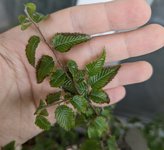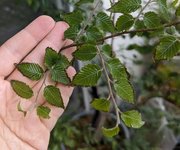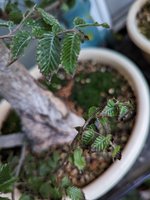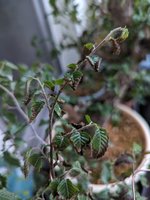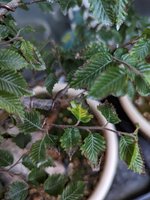proninyaroslav
Mame
Hi everyone. This is the second year I have been faced with a strange disease on my Hornbeam. The first time was at the end of summer 2023. This year it appeared earlier, in May, mainly on the leaves of the apex. In 2023, this combination of fungicides helped me: difenoconazole + flutriafol + epoxiconazole + cyproconazole . This year I treated in early spring with only epoxiconazole + cyproconazole. Later, when brown edges appeared, I decided to treat with Strobi based on kresoxim-methyl. I didn’t change the substrate, maybe it’s worth changing it next year to prevent the disease spores from spreading? By the way, it's not in direct sun, so it's not a sunburn.

